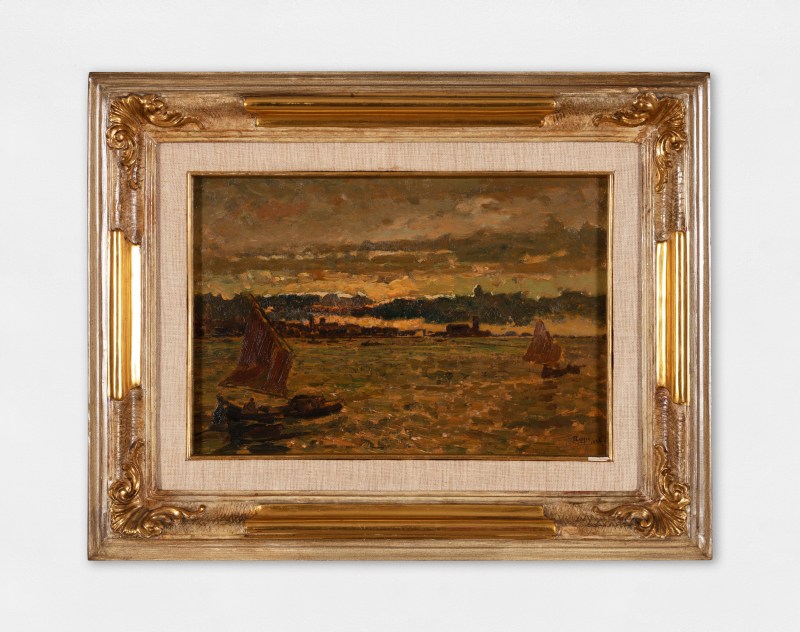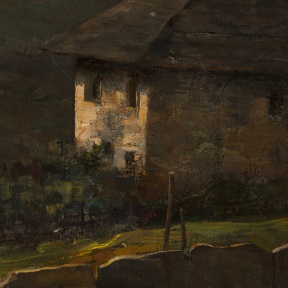-
Biography
Beppe Ciardi (Venice, Italy 1875 – Quinto di Treviso, Italy 1932)
Born in Venice in 1875, from 1896 he studied with his father, Guglielmo, at the Venice Academy of Fine Arts. He made his debut at nineteen, exhibiting sixty life studies at the Sforzesco Castle in Milan. In 1899, he graduated and joined the Venice International Art Exhibition with the triptych Terra in Fiore, in line with the artificial and decorative taste "floral" style in fashion then.
Although much of his following artwork hinted at an interest in the Nordic masters, he excelled in his contemplation of the countryside, views of the sea and lagoon cities. He painted corners of the Treviso countryside with dense, constructive and vibrant brushstrokes.
He also explored portraiture, until two of his female portraits were rejected at the Venice Biennale in 1903, when he abandoned the genre.
A long friendship with Vittore Grubicy brought him closer to the work of Segantini, with the suggestion of a pointillist technique and luminism.
In 1912, an entire room at the Venetian Biennale hosted forty-five of his canvases documenting the various phases of his painting.
He spent his life with his family in the houses of Venice, Canove on the Asiago Plateau and Quinto di Treviso, alternating his painting with farming, while continuing to exhibit at different Bienniales.
A landscape painter with scenes characterised by a symbolic interpretation of nature which earned him the esteem of critics, he received the Fumagalli Prize in Milan (1900), a gold medal in Munich (1901) and a silver medal in San Francisco (1904). In later decades, his work drew inspiration from everyday life in Venice and the countryside around Treviso.
He died suddenly in Quinto di Treviso in 1932.
Photo UniCredit Group (Sebastiano Pellion di Persano)
-
Works
Beppe Ciardi: Italian, 1875-1932
A Venetian painter, heir to the landscape painter, Guglielmo. He was a protagonist of the realist turning point in Venetian painting and brother of Emma, the most famous and successful female Italian painter of her time.Join our mailing list
* denotes required fields
In order to respond to your enquiry, we will process the personal data you have supplied in accordance with our privacy policy.










